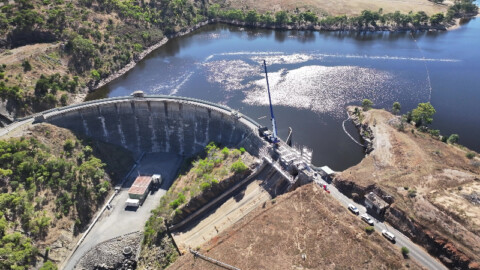The proposed delay of the coal-powered Eraring Power Station’s closure has been criticised in a joint statement released by the Smart Energy Council, Climate Energy Finance, the Clean Energy Investor Group and Nexa Advisory, which warns that the delay will majorly undermine emissions reduction efforts.
Director of think tank Climate Energy Finance and author of The Lights will Stay On report on the Eraring closure, Tim Buckley, said that there are leaked reports that the NSW Electricity Supply and Reliability Review will recommend taxpayer subsidies to extend the life of Eraring coal power station beyond its expected closure date.
Mr Buckley said that this would be a massive retrograde step, when the exact opposite is needed – implementation of an accelerated transition to firmed renewables.
“There is no case to delay the planned closure of Eraring and pay its operator the estimated $200-400 million in public subsidies to do so. This money should be invested in New South Wales’s energy transition,” Mr Buckley said.
“We call on New South Wales Energy Minister, Penny Sharpe, to flood the market with distributed energy and infill utility scale renewables firmed by accelerated deployment of batteries, to drive more capacity. This will ensure supply and reduce wholesale electricity prices, putting permanent downward pressure on energy bills whilst also better aligning our decarbonisation pathway with the climate science.
“The leaked recommendation to extend Eraring’s life ignores the dual cost of living and climate crises smashing the people of New South Wales. The hyperinflation of fossil energy is driving these, handing windfall profits to multinationals as taxpayers and our environment wear the costs. Only an accelerated transition to cheap, deflationary firmed renewables will solve these twin crises.”
Mr Buckley said that the July report, The Lights will Stay On, demonstrated that there are more than enough renewable proposals in the investment pipeline to replace Eraring’s capacity, and that New South Wales can close Eraring on-time in 2025 and secure supply by:
- Continuing the current run-rate of 1.2GW annually of New South Wales rooftop solar installs
- Front-end loading at least 1.2GW annually of utility scale wind and solar within the state to 2030
“Fast-to-deploy distributed energy resources (DER) are key to the transition and ensuring supply, and need to be accelerated first. We call on Penny Sharpe to match the Federal program to support rooftop solar, storage and energy efficiency upgrades to 60,000 social housing homes with funding from the $1 billion New South Wales Energy Security Corporation, accelerate the rooftop solar and batteries rollout across 2,200 public schools, and advocate that the Federal Government lift the Small-scale Renewable Energy Scheme (SRES) cap from 100kW to 1,000kW to speed commercial installs of distributed solar. This will help deliver half of new capacity needed from DER with no grid delays.
“The first half of calendar year 2023 saw next to no new utility scale renewable projects across Australia, entirely out of alignment with the Federal target of 82 per cent renewables by 2030.”
Mr Buckley said that New South Wales has led Australia on the development of its Renewable Energy Zones (REZ) roadmap, but that grid transmission needed to hook up clean energy supply has been slow to be built.
“It is extremely important to note, but little reported, that the existing grid has plenty of spare capacity to accommodate distributed rooftop solar and behind-the-meter storage in homes and businesses, as well as infill utility-scale wind and solar located strategically across New South Wales.
“The NSW Long Term Energy Service Agreements (LTESAs), a framework to ensure orderly and efficient investment to meet the needs of the electricity system, and Energy Minister, Chris Bowen’s, excellent Federal Government Capacity Investment Scheme, are working hand-in-glove but need to be expedited and of greater scale and ambition. As Mr Bowen has repeatedly said, accelerated ambition is the need of the day.
“It is also worth noting coal power plant closures continue to be accelerated, with EnergyAustralia confirming Mt Piper will move to a backup power supply role a decade ahead of the official timeline of 2040, reflecting acknowledgment by the company of the economic need for a clear accelerated path to net zero in the face of the growing global climate crisis.”
CEO and chairperson of the Clean Energy Investor Group, Simon Corbell, said that delaying the closure of Eraring creates significant downside risk for investors.
“This could result in less investment in new clean energy projects in New South Wales and will blow out our emissions target and budget. Australia cannot afford to have that at this time.”
Founder and CEO of leading energy consultancy Nexa Advisory, Stephanie Bashir, said that the closure delay is being discussed as if it is unavoidable.
“It is not. We can transition if we act now and work fast. We just need to work ‘smarter’,” Ms Bashir said.
“There is no transparency about what it would take to close Eraring to the planned schedule.
“Our analysis, Eraring can be Closed on Time to Save Consumers Money, finds consumer bills would be $2,250-3,000 higher over the next ten years if the transition is not effectively managed and closure is delayed. Further potential consequences of delay include missed renewable energy targets and exceeding the state’s emissions budget.
“The risks remain clear, unless we act smart and differently to accelerate the build out needed, consumers will pay more for their energy. If we don’t act now we are going to miss our targets and cost consumers and taxpayers more in the bargain.”
Ms Bashir said that while the decade of delays in Australia’s clean energy transition has led to an increased focus on potential delays to the closure of coal-fired power stations, this route to shoring up reliability in the near term using end of life coal plants would result in lower reliability, and higher costs and emissions over the long term.
“Far better to accelerate the rate of new clean energy resource deployments. This negates the need to extend the lifespans of coal-fired power stations, and leaves energy users and the nation much better off,” Ms Bashir said.
“Extending the date of closure is not a plan, especially when there has been a five-year lead time. Central West Orana was declared four years ago and still we have no projects that are shovel ready. This decision is critical and will be a disappointing outcome for New South Wales energy consumers and taxpayers. Alternatives need to be found that can be expedited.”
CEO of the Smart Energy Council, John Grimes, said that the council is calling on the New South Wales Government to reject the recommendation of the Electricity Supply and Reliability Check Up to extend the life of Eraring Power Station.
“Extending Eraring’s fossil-fueled life fails the economic test, fails our climate, will increase future energy bills and delays investment in renewable energy storage and generation technology that exists right now,” Mr Grimes said.
“The recommendation from the Minns’ panel is disappointing and points the state down the dirty, dangerous path of a continued reliance on fossil fueled power.
“The real test is whether the Premier will stick to the problem of ageing dirty, expensive coal power or fast-track the solution of renewables that will deliver cleaner, cheaper energy and a net zero New South Wales.”
“Extending the life of this coal-fired power station will drive up energy bill prices and the cost of living for New South Wales families.”











